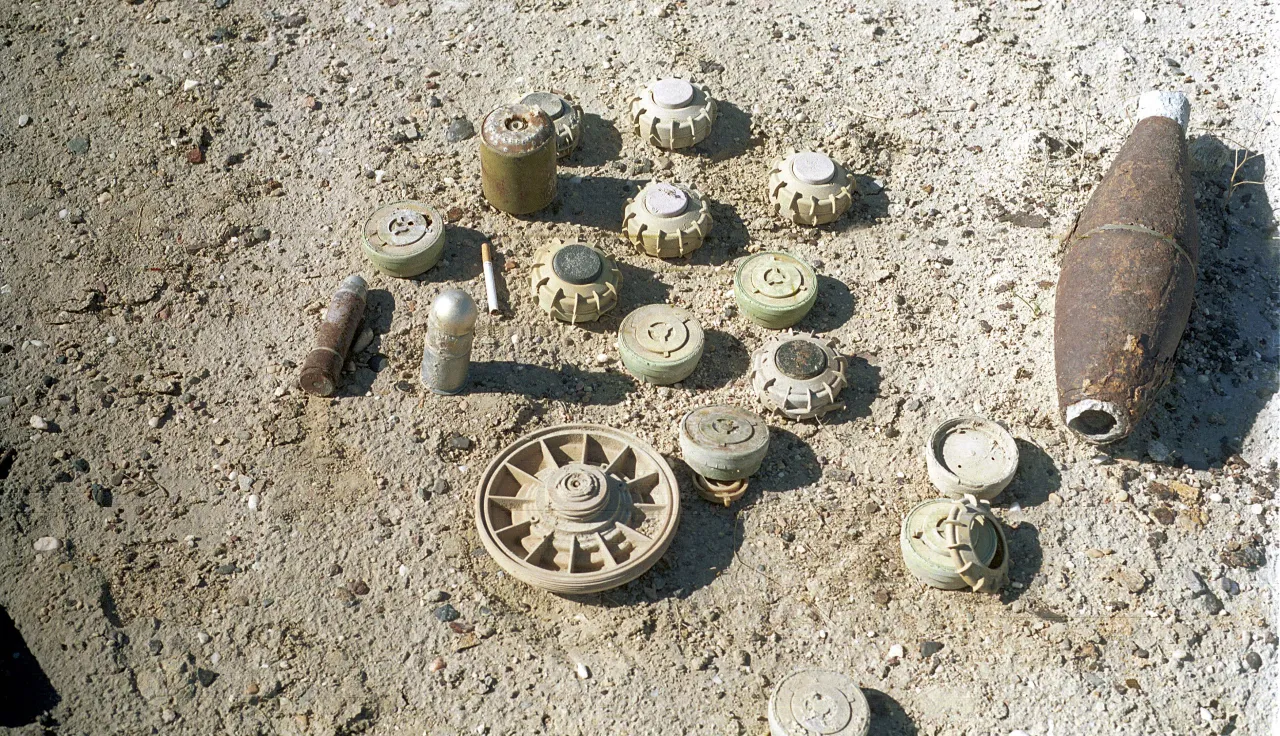The devastating effects of anti-personnel mines
Anti-personnel mines leave a long-lasting legacy of death, injury and suffering. Stepping on a mine will often injure or kill one or more people – frequently children – with lifelong consequences for the victims and their families. Mine contamination makes it impossible to use vast areas of land, compromising food production and destroying livelihoods. The impact of anti-personnel mines on communities often lasts for decades.
That is why in 1997 the international community adopted the Anti-Personnel Mine Ban Convention, which prohibits the use, production, stockpiling and transfer of these weapons and requires action be taken to prevent and address their long-term effects.
The campaign to ban anti-personnel mines was one of the major humanitarian initiatives of the last three decades. The ICRC, along with states, the International Campaign to Ban Landmines, and the United Nations, argued for a comprehensive prohibition on their use, stockpiling, production and transfer. States responded by adopting the Anti-Personnel Mine Ban Convention – but that was just the beginning. The Convention then had to be implemented.
Today, more than 20 years after the Convention's adoption, substantial progress has been made but great challenges remain, especially in removing mines that remain in the ground, as well as in relieving the suffering of the injured and their families.
More than three-quarters of the world's countries have now joined the Anti-Personnel Mine Ban Convention. The new use of mines by states, even those not party to the Convention, is rare. Until recently, there had been a steady decline in the annual rate of new casualties of mines and other explosive remnants of war. However, this has begun to change, primarily due to the use of improvised mines in some countries currently experiencing armed conflict. The result is that in 56 countries and territories, mines and other explosive remnants of war – the result of both past and ongoing conflicts – lead to thousands of casualties each year.
People injured by landmines and other explosive remnants of war usually require lifelong care. The Anti-Personnel Mine Ban Convention requires states to help the hundreds of thousands of mine victims, most of whom are in countries with very limited health and rehabilitation facilities. While the inclusion of victim assistance in the Convention was a major achievement, progress in this area has been slow. There has been a general improvement in the states parties’ capacity to collect data and gain a clearer understanding of the needs of victims, yet many do not have a national victim assistance plan in place or provide adequate services to those in remote areas. As a result, many survivors have yet to see a substantial improvement in their lives and in their access to medical care, physical rehabilitation services, psychological support, social services, education and employment.
The Convention also sets clear mine-clearance targets, giving each country ten years to demine its territory. Since the Convention's adoption, thousands of square kilometres have been cleared and 30 states parties that had areas known or suspected to contain such mines are now reported to be free of these weapons. Clearance is ongoing in another 30 states, although most of them have had to have their original ten-year deadline extended.
The states parties are also required to destroy their stockpiles of anti-personnel mines. Before the Convention was adopted, more than 130 states were reported to possess these weapons. Since then, the states parties have destroyed more than 53 million mines. Today it is estimated that only about 30 states – only three of which are party to the Convention – still stockpile anti-personnel mines.
The Third Review Conference of the Convention – held in 2014 in Maputo, Mozambique – demonstrated the dynamic and results-oriented attitude of the states that have joined this treaty. To address the ongoing challenges, the Conference adopted the Maputo Action Plan, which requires strong commitments to improve work in the fields of victim assistance, stockpile destruction and mine clearance, as well as a clear commitment to meet the key goals of the Convention by 2025. With determined implementation and sustained resources, these aspirations can be realized.











